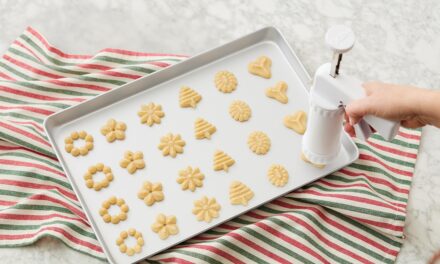Is imitation vanilla the same as vanilla extract? Can one be swapped out for the other? Let’s break down the great vanilla flavor vs extract debate!
Whether you’re a seasoned pancake flipper, a cookie baker or a frosting maker, chances are you have at least one bottle of vanilla extract in your pantry. Great for adding a warm, vanilla flavor to your baked goods, this extract comes in a variety of forms–namely imitation vanilla, vanilla flavoring and pure vanilla extract.
While they differ in how they’re made, imitation vanilla, vanilla flavoring and pure vanilla extract behave pretty much the same. And, in most cases, you can swap one for the other without changing the flavor of your recipe. Let’s take a deeper dive into the differences between these three vanilla extracts.
What is the difference between pure vanilla extract and vanilla flavoring?
The main difference between pure and imitation vanilla flavoring is how these two extracts are made. Pure or real vanilla extract must contain vanilla beans, water and alcohol in order to be called ‘pure’. Imitation extract must also contain these three ingredients but can have other flavors to help boost the vanilla taste. Vanilla flavoring uses synthetic vanillin instead of vanilla beans to achieve the vanilla flavor.
These extracts also vary in price. Since pure vanilla contains real beans, it’s usually the most expensive. Imitation vanillais a bit more budget-friendly, while vanilla flavoring is often the cheapest option.

What is vanilla essence?
Vanilla essence is a manufactured liquid that tastes like vanilla but contains little or no real vanillin. This synthetic vanilla flavor is great for adding just atouch of vanilla taste to your treat. You can also find essence and vanilla flavoring in larger bottles, so they’re great for bulk baking or recipes that require a large amount of extract.
Since vanilla essence is manufactured using synthetic ingredients,it’s also a good option if you’re looking for an alcohol–free flavor extract.

Can you use vanilla flavor instead of vanilla extract?
In almost all cases, vanilla flavor, pure vanilla extract and imitation vanilla extract can be swapped out for each otherwithout any problem. The amount of extract used in most baking recipes is so small that a 1 to 1 swap will not change the flavor of your dessert.
For a stronger vanilla flavor, you can replace any amount of imitation or vanilla flavoring with an equal amount of pure vanilla extract. For a softer vanilla flavor, replace any amount of vanilla extract with an equal amount of vanilla flavoringor essence.
If a recipe calls for extract but you want to avoid alcohol of any kind in your baked goods, stick to vanilla flavoring or vanilla essence instead. Pure and imitation vanilla extracts to contain alcohol and should be avoided in this instance. However, you may need to add a little more flavoring or essence to your treat to pump up the vanilla flavoring. Try doubling the amount of flavoring or essence you use to mimic the strong vanilla flavor of an alcohol–based extract.

How much imitation vanilla equals vanilla extract?
For non–baked treats, such as whipped cream, buttercream frosting and ice cream, may need to double the amount of imitation vanilla to get the same level of flavoring that pure extract provides. If a recipe calls for 1 teaspoon pure vanilla extract, you can swap in 2 teaspoons of imitation vanilla or vanilla flavoring to get a similar flavor.

So, no matter what extract you haveon hand, it should be easy to get that warm, vanilla flavor you love in your baked and non–baked treats! You can learn even more about imitation vanilla and get answers to more questions on our Imitation Vanilla Extract 101 & FAQpost! Happy baking!





